All You Need to Know about Search Arbitrage
May. 25, 2024
In affiliate marketing, staying ahead of the competition is essential for achieving success. As we look ahead to 2024, it’s important to know that search and content arbitrage is one of the hottest areas to make money this year. At the same time, it’s going through some big changes as it develops.
This article is here to help you understand what search arbitrage is and how it really works.
(*If you would like to discuss/exchange knowledge with me regarding search arbitrage business, please add my Telegram or Skype, and join our community group. Contact info is at the end of the article)
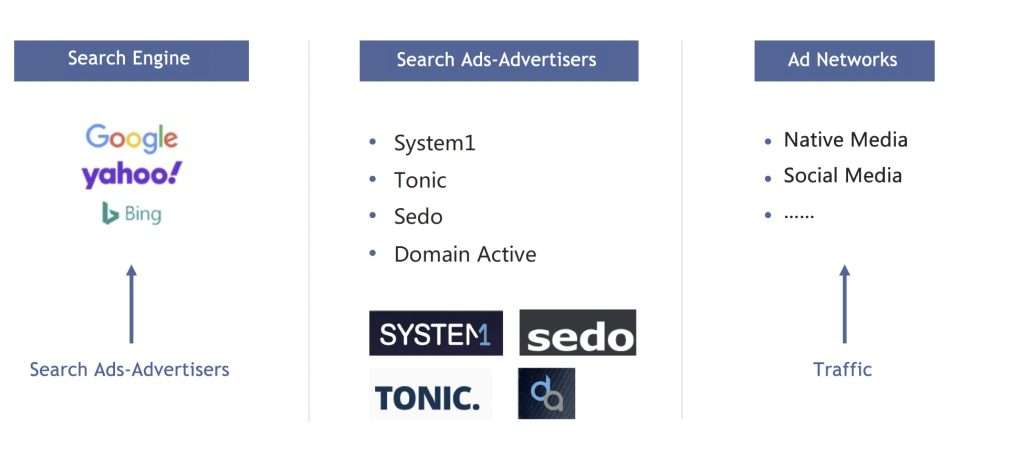
What-What is Search Arbitrage?
Search arbitrage is a method of traffic arbitration that involves purchasing display traffic and then selling search ad results to make a profit from the price difference. The search ads are served through parked domains and feature advertisements for which other advertisers are paying on platforms such as Google, Bing, or Yahoo. If you have previous experience with running search ads, you must have noticed the following traffic inventory options in platforms such as Google Ads and Bing Ads / Yahoo Ads.
Google Ads – Include Google search partners.

Bing Ads / Yahoo Ads – Syndicated search partners.

Full flow of Search Arbitrage Activity
The below picture explains the whole search arbitrage activity process with a 2-click flow AFD search feed arbitrage as an example
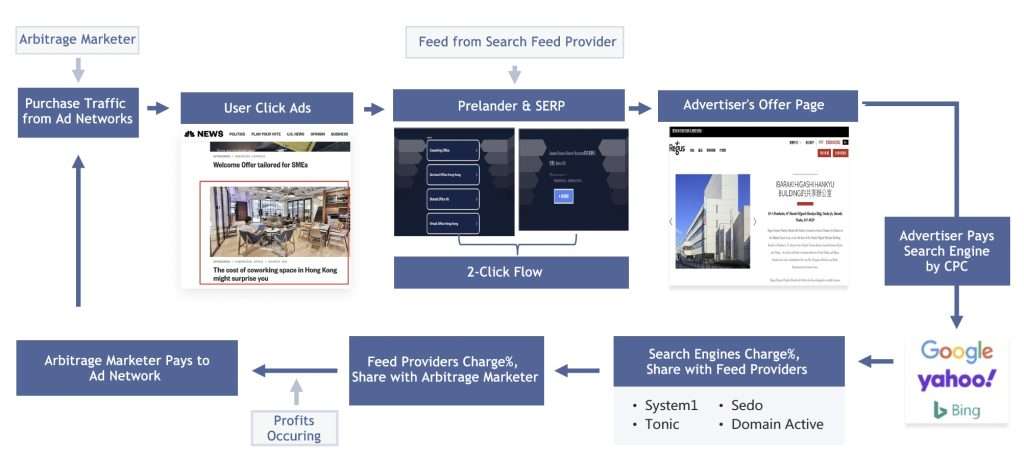
Who Participates in Search Arbitrage?
- Arbitrageour (arbitrage marketer). This is you, connecting all stakeholders with a traffic arbitrage campaign. Your role is to make everyone happy – and earn some money along the way.
- Ad network. This is where you will be getting traffic from. This may be a standard CPA network, social media platform, search engine, or any other place where you can get money from in exchange for money.
- Feed provider. This is where you will be directing traffic to. Feed providers are a bit like affiliate networks in standard affiliate marketing campaigns. But instead of presenting a single offer, they display a SERP-like page with search queries related to the original ad in the ad network. Feed providers are a general term – They are usually run by affiliate programs that act as feed providers.
Click Flow in Search Arbitrage
1. 1-Click Flow:Ad->SERP Page
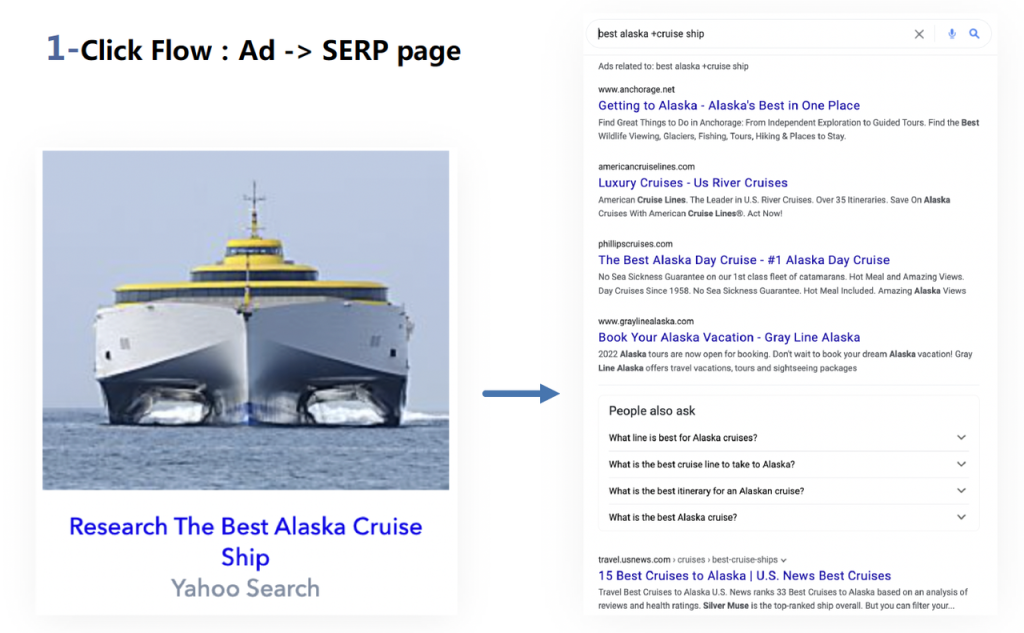
2. 2-Click Flow:Ad->Prelander->SERP Page

3. 3-Click Flow:Ad->Content Page->Prelander->SERP Page

4. 4-Click Flow:Ad->Content Page1->Content Page2->Prelander->SERP Page
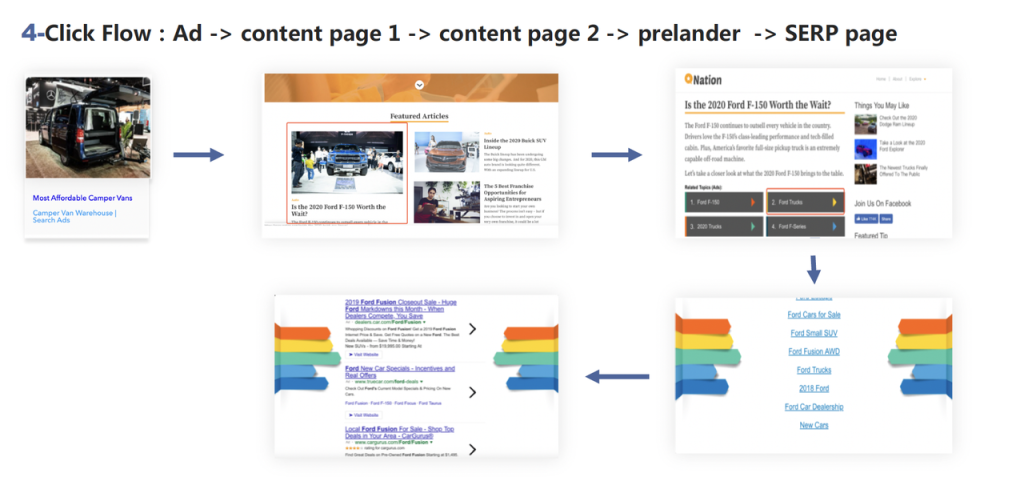
How-How does Search Arbitrage Work ?
Traffic arbitrage is about reselling traffic. You still deal with two sides of the equation: a party that you get traffic from (ad network) and a party where you sell and redirect traffic to (feed providers). Same as in any paid advertising scenario.
The difference is that your traffic doesn’t go immediately to an offer. Instead, it goes to the search engine result page (SERP) that then takes visitors to the final offers.
When you buy traffic from Social Media / Native / Display and other platform with the cost (CPC) that is lower than the revenue (EPC / RPC) of search results monetization activities, it can be profitable.
For example, arbitrage marketer in Taboola advertising for a click with a cost (CPC) of $ 0.2, users click on the landing page search results, and the arbitrage marketer get a revenue (EPC/RPC) of $0.4 , the profit will be $ 0.4-$ 0.2 = $ 0.2
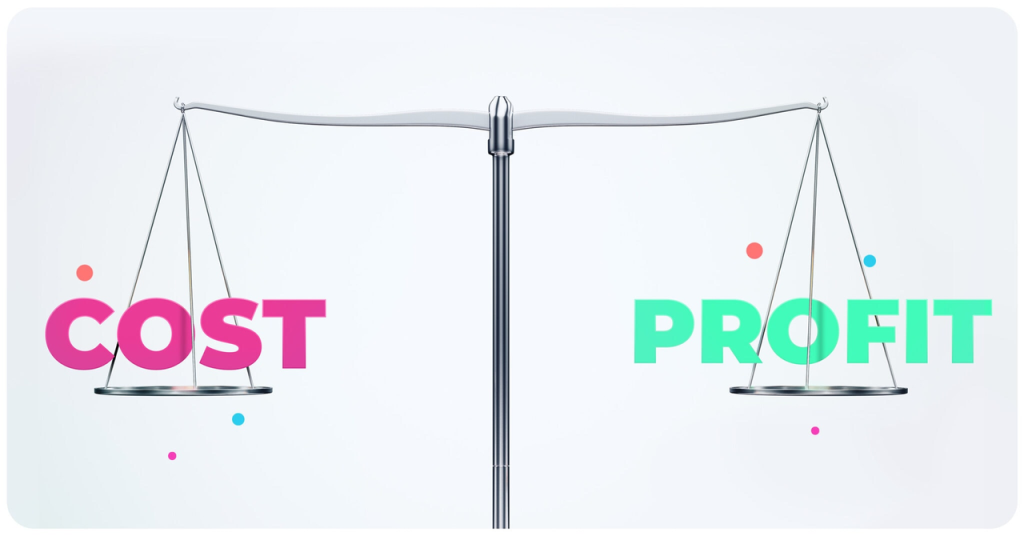
Types of Search Arbitrage
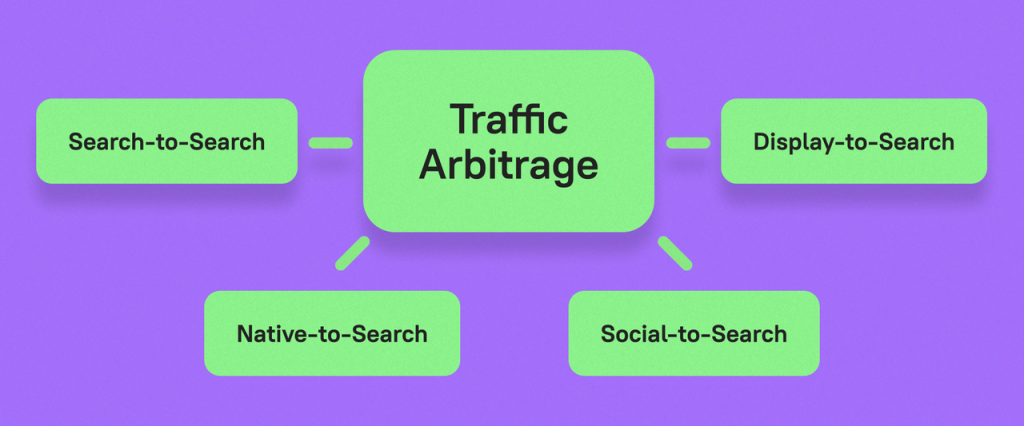
Search to Search(S2S)
In this scenario, you purchase traffic connected with a cheaper keyword and then you send it to a feed provider for the same or very similar keyword that is slightly more expensive.
Display to Search(D2S)
You purchase banner traffic and then send it to related search results. As display traffic is generally considered to be cheaper, this is a great option to start, as it is financially safer.
Native to Search (N2S)
The goal of this type is to buy cheap traffic from a native platform and send it to a search result page.
Social to Search(S2S)
Traffic bought on social platforms is sent to a search result page. Like with display to search type, social traffic is usually a bit cheaper, so making a profit in this case should be a little bit easier.
Traffic Sources
Be sure to check with the Feed Provider’s account manager ahead of time to see which traffic sources are allowed and accepted
Compliant Traffic Source
• Native
Taboola
Outbrain
MGID
RevContent
Baidu Mediago
• Social
Meta (Facebook/Instagram)
TikTok
Snapchat
X(Twitter)
Pinterest
• Search
Google
Bing
Yahoo
• Display
Google Display Network (GDN)
Yahoo DSP
• Organic Website Traffic
Non-Compliant Traffic Source
• Email
• Messenger
• Push
• Pop-Up / Pop-Under
• SMS
• Browser Extension
• Survey
Feed Types in terms of Search Arbitrage with Google
AFD(AdSense for Domain)
What does an AFD feed look like?
2-Click Flow:Ad->Prelander (Parked Domain with Bullet Search Terms)->SERP->Advertiser’s Offer Page
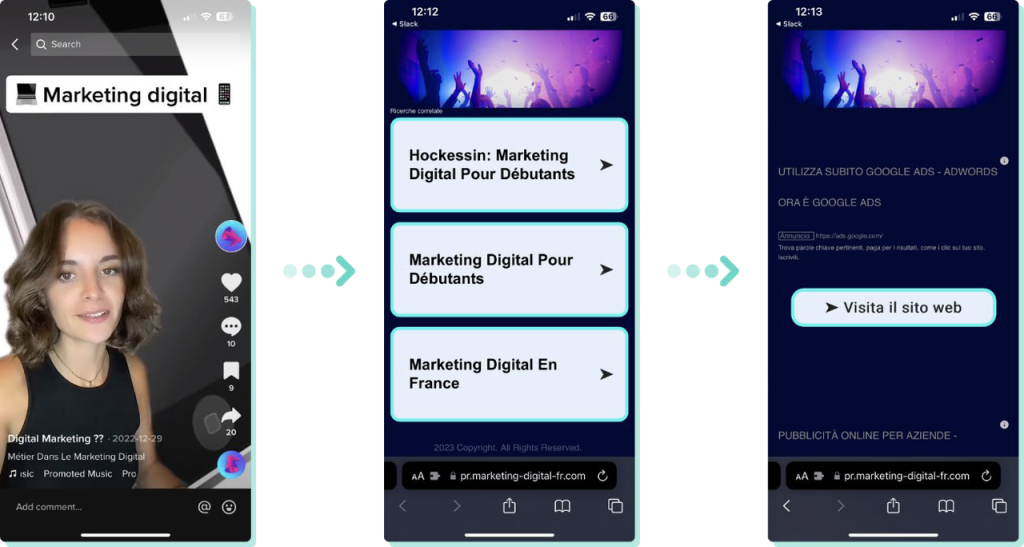
AdSense for Search(AFS) or Related Search of Content (RSoC)
What does an AFS feed look like?
Type in a keyword in the Search Bar of a Content Page or Content Site that has integrated with AFS feed.
*In the below example, I typed in “hair implant” in the search bar of the content website.

Below shows the Search Result Page(SERP)
*As my location is in Hongkong, it shows the offers related to “hair implant” in Hongkong.
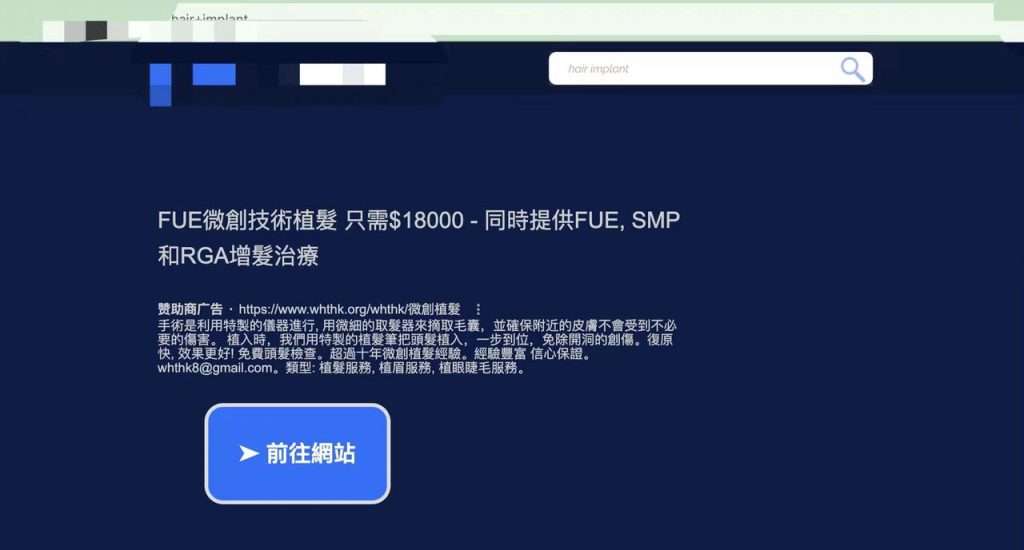
What does a RSoC feed look like?
Ad->Content Page with Bullet Related Search Terms->SERP->Advertiser’s Offer Page
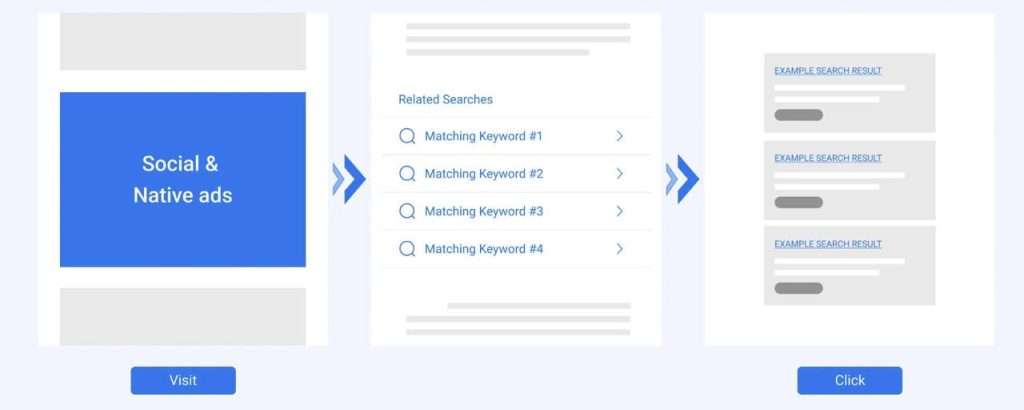
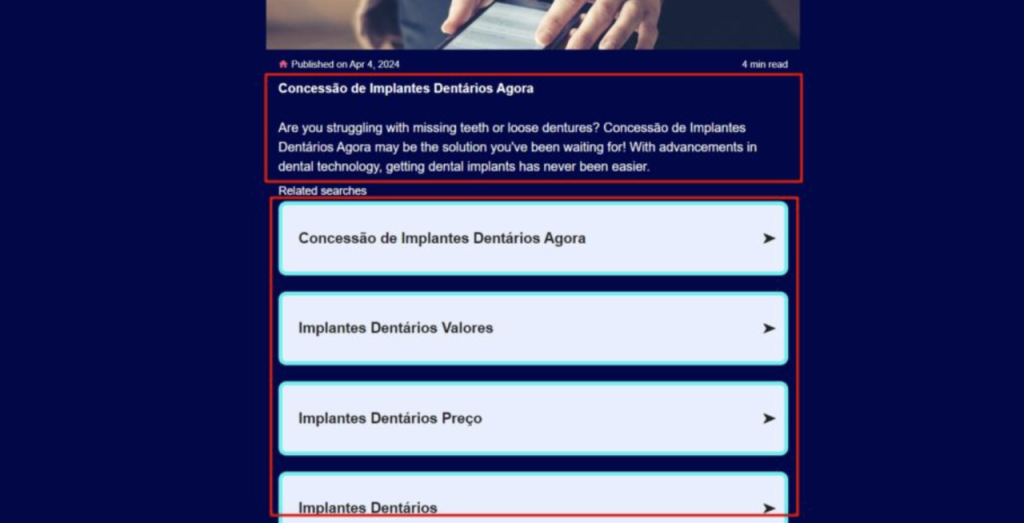
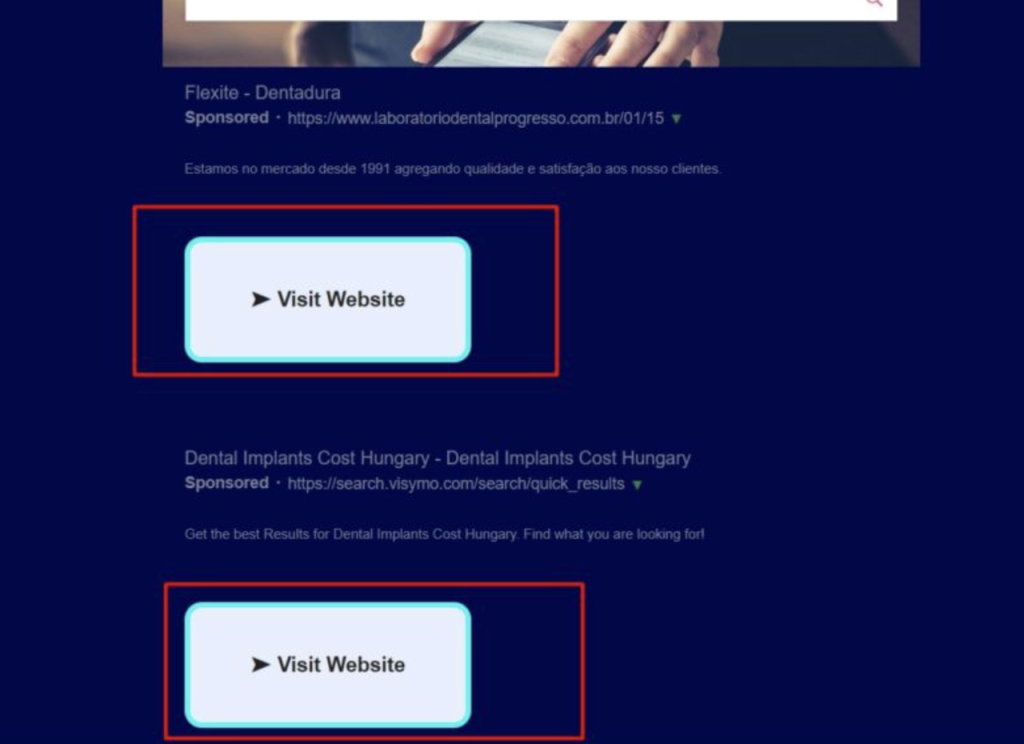
Who are the Feed Providers
Popular Feed Providers:
- Google AdSense
- Yahoo
- Bing
- System 1

- CBS Interactive
- Sedo
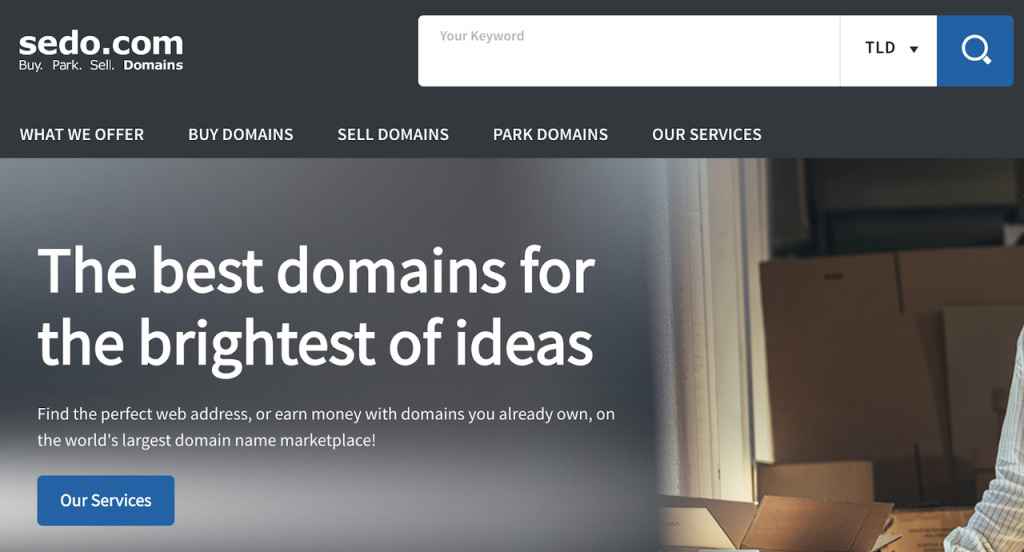
- Tonic
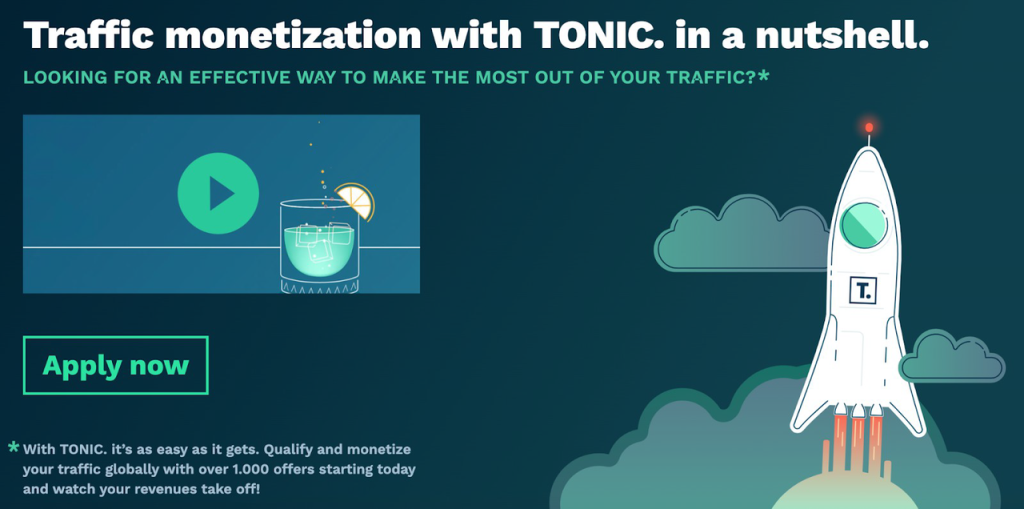
- Domain Active
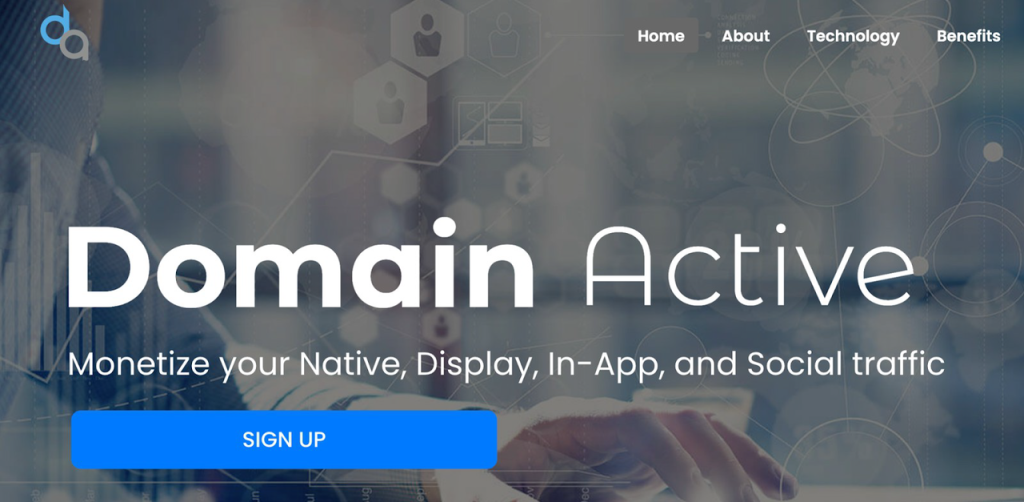
- Ads.com (Bodis)
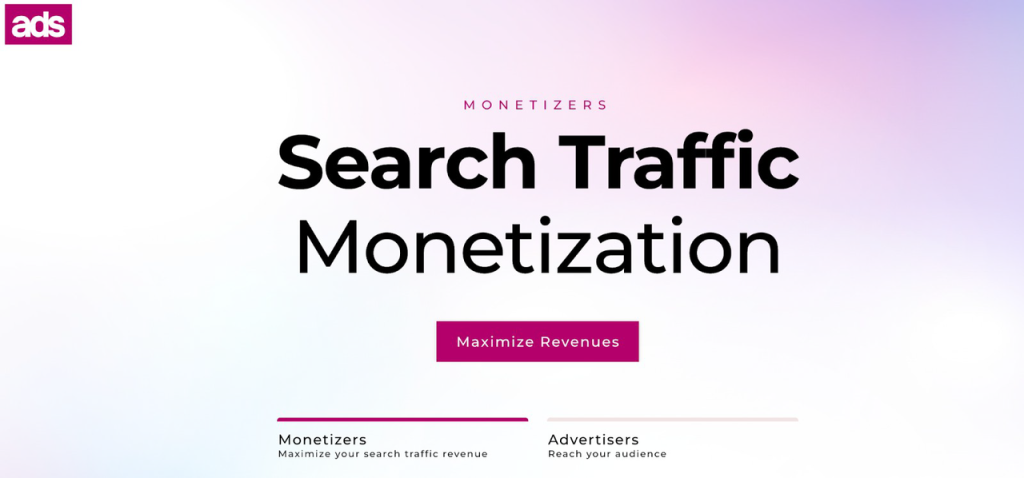
Popular Feed Providers:
- System 1 (https://system1.com)
- ExplorAds (https://explorads.media)
- Inuvo (https://portal.inuvo.com)
- AirFind (https://airfind.com)
- Intango (https://www.intango.com)
How to Apply from Feed Providers
It is better to have a Business Entity as some Feed Providers may require so.
The main application channels we know so far:
- Via Feed Providers’ Official Website
- Directly communicate with Account Manager if you have contacts
- Ask Ad Network Agency or Feed Providers’ Ecosystem Partners to refer
- Through industry exhibitions and summits
Factors that Feed Provider will Consider during Application
- Reliability
- Potential
- Traffic Quality
- Traffic Volume
*DomainActive, as far as what we know, is not on-boarding new customers at the moment.
*Tonic has an application threshold in terms of daily traffic volume, around $3000.
*Ads.com will need 3 referrer during application.
*System1 requires you to have a business entity.
Payment Terms of Feed Providers
Payout Terms
The basic payout terms are Net 45, Net 30, and Net 15.
Most Feed Providers have a Net 45 payout term, but may have longer payout terms for the first time when you start working with them.
As cooperation stabilizes and the volume increases, you may be able to negotiate a shorter payment term with the Feed Provider, such as Net 15.
In addition, Feed Provider will make Deduction according to Traffic Quality and Compliance.
There are several factors that make up good quality traffic:
- Convertibility
- Stability
- Human origin
What Are the Compliance Rules?
Like with any other business activity, search arbitrage has its own standard rules which in general tend to be the same on all the search feed providers and search networks. The following are some of the most common rules you need to comply to.
• No clicking on your own ads
It is also strictly prohibited to click on your own ads for the purpose of generating revenue.
• No Push traffic
Due to the disruptive nature of push traffic, it is strictly prohibited promoting search arbitrage campaigns on such traffic. Quite often push traffic publishers may show up on some native ad networks, in which case the publishers should be immediately blocked.
• No Incentivized traffic
Sending incentivized traffic towards your parked domains is strictly prohibited by the upstream provider.
• No False Claims
Headlines and images used in ads need to provide a clear message about the services promoted behind the ad and not use any misleading claims that trick the user
In addition, Feed Provider has specific requirements for Traffic Source, Click-Flow, and Parameter(in post back).
Knowledge Sharing
Popular GEOs for Search Arbitrage
- United States (US) – Tier 1
- France (FR) – Tier 1
- Italy (IT) – Tier 1
- Germany (DE) – Tier 1
- United Kingdom (GB) – Tier 1
- Spain (ES) – Tier 2
- Belgium (BE) – Tier 2
- Netherlands (NL) – Tier 2
- Peru (PE) – Tier 3
As with other digital marketing types, Tier 1 countries (so rich countries where the Internet appeared first) usually are harder, as the competition between advertisers is fiercer and Internet users have seen all tricks already – but they also provide higher rewards.
Tier 2 countries are often the sweet spot of advertising, the healthy balance of not too big competition and reasonable payouts. Tier 3 countries offer the cheapest traffic – but traffic quality may be an issue.
Popular GEOs for Search Arbitrage
Factor to Consider for Keyword Selection of Search Arbitrage
- High CPC
- Low Competition
- High Search Volume
- User Intent
Popular Niches for Search Arbitrage
- Insurance & Finance&Loans
- Online Education
- Marketing & advertising
- Legal
- Internet and Telecoms
- Dental implants
- Online banking
- Cryptocurrency
- Home & garden
- Automobile
- Fitness & Health
- Beauty
Keyword Intelligence Tools for Search Arbitrage
Google Ads Keyword Planner
SEMrush
Ahrefs
Keywordtool.io
Moz Keyword Explorer
Dataforseo(https://dataforseo.com)
ChatGPT
Spy Tools for Search Arbitrage
Facebook Ads Library
AdSpy (https://www.adspy.com)
Adheart (https://trk.adheart.me)
Adbeat (https://www.adbeat.com)
Tracker Tools for Search Arbitrage
ClickFlare (https://clickflare.io)
Voluum (https://voluum.com)
Campaign Automation Management Tool for Search Arbitrage
The Optimizer (https://theoptimizer.io)
Maximizer (https://maximizer.io)
Reference
Social to Search:
Native to Search:
RSoC:
AdSense for Search(AFS) or Related Search of Content (RSoC)
Others/General:
In the End
If you would like to discuss/exchange knowledge with me regarding search arbitrage business, please add my Telegram or Skype, and join our community group.
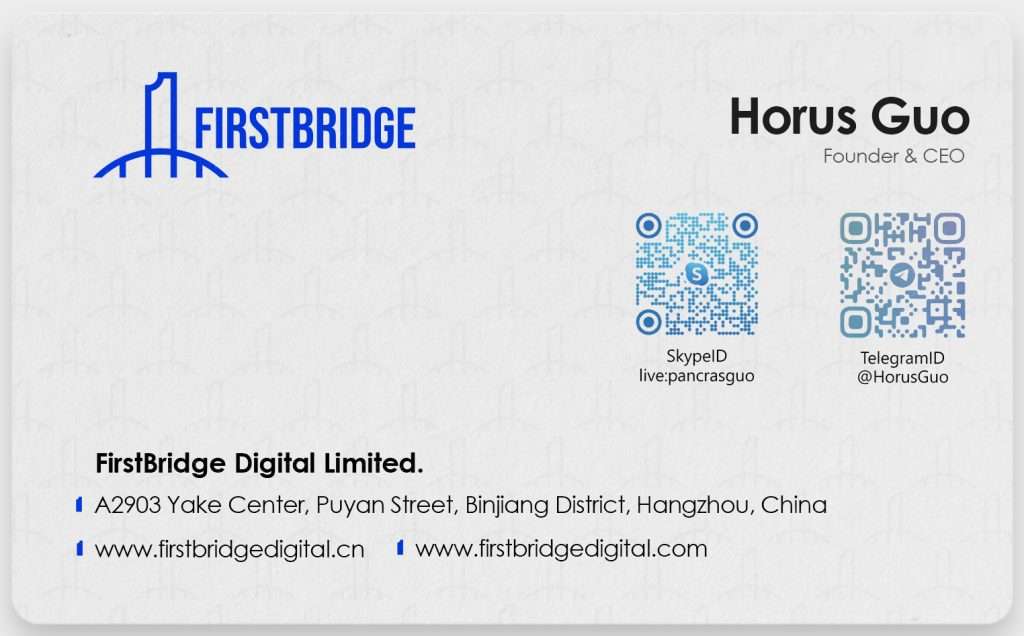
·END·